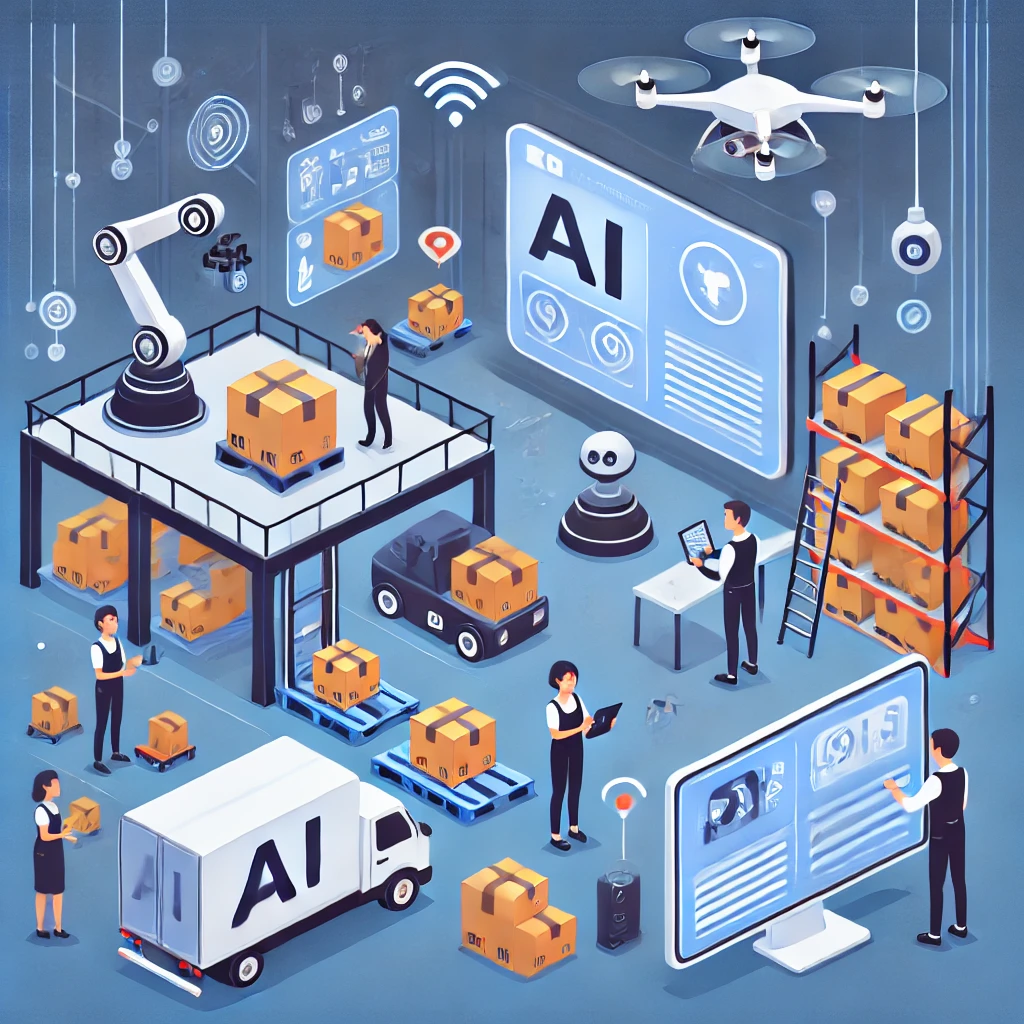
AI is used in logistics contexts in many different ways. The most important ones include:
- AI can be used to accurately forecast sales levels, which, in turn, allows better forecasts of what inventory levels should look like. Companies don’t want to have too-high inventory levels, as this means capital is bound and that additional space is needed. Also, some items can either spoil (food) or go out of fashion (apparel, shoes, etc.) if they are stored for a too long of a time. Using AI forecasting tools to know what future demand will most likely look like allows companies to optimize their inventory levels. Amazon (NASDAQ: AMZN) is one of the companies that utilize Artificial Intelligence to forecast demand, using its in-house algorithms for this task.
- Manual labor can be expensive, and especially during times of labor shortages, companies seek to reduce the manhours needed for their operations. Automating warehouses is thus a big theme in logistics. Robots that use AI technologies, such as computer vision, are increasingly used for manual tasks, such as filling boxes, sorting things, etc. Amazon is, again, among the leaders, planning to potentially replace hundreds of thousands of jobs with AI-empowered robots in the future.
- Another area where manual labor can be partially automated is delivering things from A to B. This includes both last-mile deliveries via drones, robots, etc., but also trucking via self-driving vehicles. These technologies are still in their early stages, but many companies are working hard on pushing these technologies forward — and in the 2030s, many deliveries will be made partially or fully automated.
- Highly complicated supply chains, such as airplane or automobile manufacturers that buy thousands of parts from different companies, risk management plays a big role in logistics too. Past crises, such as the blockade of the Suez Canal a couple of years ago, have shown that global supply chains can be vulnerable, which is why it is important for companies to know about potential bottlenecks and risks in their supply chains. Once these threats are identified with the help of AI tools, companies can then work on risk mitigation, e.g. by increasing warehousing of at-risk parts and tools.
The Emerging Winners
Companies, like AMZN, that are “techy” use AI heavily and will only expand their skills, but more traditional logistics players, like UPS (NYSE:UPS), employ AI as well, e.g. for optimizing routes to increase efficiency.
Tech companies that power these trends in logistics from behind the scenes include Alphabet (NASDAQ: GOOG) via its Vertex AI machine learning platform, IBM (NYSE: IBM) via its Watson platform, and Palantir Technologies (NASDAQ: PLTR) via its risk analysis tools. Companies that provide data center tech, such as NVIDIA (NASDAQ: NVDA), benefit from broad growth in AI use, including from logistics players as well.
Investors that are interested in broader exposure to Artificial Intelligence can take a look at our top picks that benefit from AI-driven logistics and from Artificial Intelligence usage expanding across many different industries.

